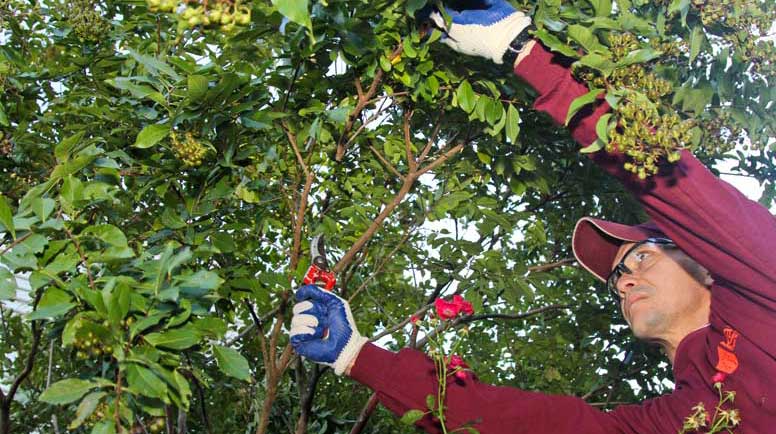DESIGNING A YARD USING HYDROZONES
Effective planting for effective watering
For trusted expertise and superior results,
find a landscape professional near you.

Healthy lawns are beautiful but unbeknownst to many, they also offer tremendous environmental benefits. For starters, they prevent erosion, cool the local environment and filter pollutants from air and water. With the foundation they offer aesthetically and environmentally, they really are the root of happiness (pun intended). Achieving a healthy lawn requires more than a dousing of water and a weekly mow. It takes knowledge, skill, and experience. Lawn care professionals are trained to bring lawns to life but for those trying to create a carpet of green on their own, avoid these 5 common lawn care mistakes.
Planting Grass Where It Won’t Grow. Grass is an essential component of a healthy lawn; however, many homeowners try to force grass to grow where it’s just not meant to thrive, leading to frustration, wasted time and often, wasted resources. Grasses are full sun plants with limited abilities to adapt to the shade. If you are trying to add green to a shady spot, set yourself up for success with ground covers that will thrive in sun-starved areas instead of futile attempts and getting grass to grow. Consider ajuga, pachasandra, hostas, lamium, or deadnettles for success in the shade.
Planting Only One Type of Grass and/or the Wrong Kind – Variety is the spice of life and a necessary ingredient for a healthy lawn as well. When planting grass seed, choose a variety of seeds so your lawn is more likely to weather poor conditions, like heat and drought. Also, it is worth noting that different kinds of grasses are meant to be successful in different regions of the country. The United States is divided into three zones that run across the country like cake layers. There’s a zone for warm-season grasses (south), one for cool-season grasses (north) and a transitional zone in the middle where it can be a challenge to grow grass. Make sure to select the grass seed most conducive for success in your region of the country.
Too Much/Too Little Water – Each lawn has its own unique needs but a good rule of thumb is to assume your lawn needs about an inch of water a week. If it doesn’t get it naturally from rainfall, it will need a little help. If you don’t have an irrigation system that takes the guess work out of how much is enough, remember grasses prefer less frequent, deeper waterings that give their roots a good solid soak over more frequent shallow water.
Mowing Too Short - One of the biggest mistakes homeowners make in caring for their lawn is mowing the grass too short. For many, over-mowing is an attempt to save a little energy or time by trimming the grass shorter, thereby in lessening the need to mow. This ill-conceived time saver actually damages the grass, making root systems shallow and unable to soak up all the nutrients they need. Most grasses do best when they are trimmed to 2 ½ to 3 inches. Never remove more than 1/3 of the height of the lawn in any one mowing.
Improper Use of Fertilizer – Properly applied fertilizer helps lawns grow thick and full, allowing grass to be strong and capable of overpowering weeds that try and take up root. But there are a host of mistakes rookies make when applying fertilizer. Many apply at the wrong time of year. Most lawns need 4-6 applications of fertilizer per year and generally fall’s application is the most important. It is best to fertilize when grass is growing. While many people believe more of something is better than less, this is not the case with fertilizer. Too much fertilizer makes too much plant leaf and won’t allow the roots to grow well. Additionally, an excess of fertilizer can also burn the lawn.
Healthy lawns require routine maintenance such as mowing, fertilizing, and weed and insect control. While the work can be time consuming and takes extreme expertise to do well, the rewards to your family – and the environment – pay dividends.
Healthy lawns are on most every homeowner's wish list, but getting your yard in tip-top shape is often easier said than done. To bring your ideas to life and create a dream landscape, it’s best to work with a local landscape professional. To find a professional near you, visit LoveYourLandscape.org/Find-a-Pro.

Effective planting for effective watering

6 situations when you should ditch DIY and get professional help

8 things to do this weekend to start loving your landscape
We recently updated our Privacy Policy. By continuing to use this website, you acknowledge that our revised Privacy Policy applies.